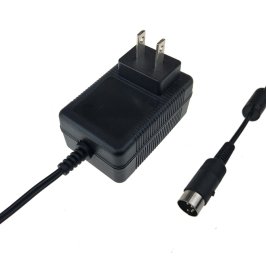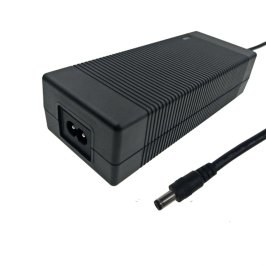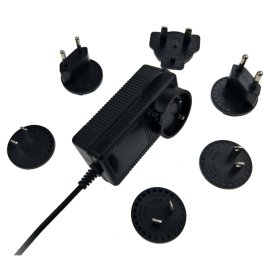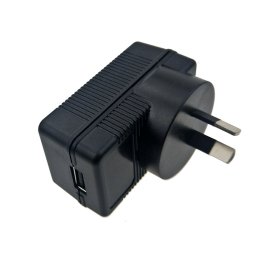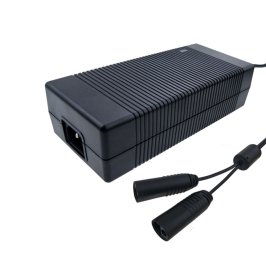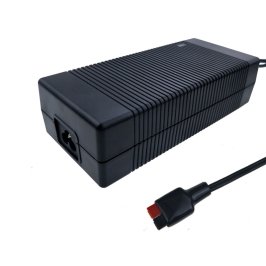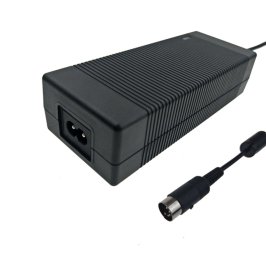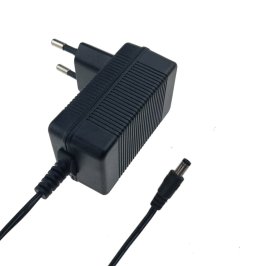Before assembling the switching power with
interchangeable plug power adapter, please prepare various components, common tools, and auxiliary materials in accordance with the BOM list. If you use the proper tools, you will not only improve work efficiency but also ensure assembly quality. All the discrete components should be tested before installation. Please install the patch element firstly, such as patch IC, patch resistance, patch capacitance, etc. Then install the plug-in components, such as small & low-height resistors and diodes, DIP packaged IC, etc. And finally, install the large-sized radiator plates with power devices installed. Please note the polarity marks of polarized electronic components, such as electrolytic capacitors, diodes, etc. Pins and pads with different size should be welded by electric soldering iron with different power to ensure welding quality and reliability. After the component assembly is completed, the debugging method is carried out in the following order:
1. Prepare the instrument for debugging.
2. Check before power-on.
3. Observe after power-on.
4. Proceed various tests about electrical performance.
Please prepare the relevant test instruments before debugging. Switch power debugging instrument mainly include AC Source (or isolation transformer, self-coupling voltage regulator, AC voltmeter, AC ammeter, power meter), the electronic load (or DC voltmeter, DC ammeter, variable sliding power resistance), double trace oscilloscope, Digi mite and insulation impedance withstand voltage tester.
When you complete the installation work about all the components, please do not power on at once. Firstly, please carefully check the following items in accordance with the circuit principle diagram: whether the circuit connection correct or not; whether there is a short circuit between pins or not; whether there is an error about diode, triode, and electrolytic capacitor polarity, etc. Then please connect the related instrument to check the following items: whether the instrument gear is correct or not; ensure self-coupling voltage regulator at low output voltage point before power on; whether the circuit should access the minimum load or not; whether the load connection is correct or not etc.
Please do not measure the data at once after the power is switched on. Please observe whether there is an abnormal phenomenon or not. Regulating self-coupling voltage regulator to make the input voltage gradually rises and observing the voltage waveform of the power switches MOS tube by the oscilloscope, which is very important. The voltage waveform can reflect the peak voltage value, which is the best observation point to prevent switch tube to damage. In addition, it is necessary to observe whether the input current is too large, whether there is smoke, whether there is an abnormal smell, whether the components are hot or not.
After the switching power is started normally, then the electrical performance test can be carried out. Firstly, please measure the stable voltage range. Under a light load condition, the input voltage is gradually increased from the minimum value to the maximum value to observe whether the output voltage is stable. Then, please measure the load characteristics. Under the rated input voltage condition, the load current is gradually increased from the minimum value to the maximum value to observe whether the output voltage is stable. At the maximum load, the input voltage is gradually increased from the minimum value to the maximum value to observe the output voltage state.
In the process of debugging, the test results should be recorded in detail so as to make reasonable adjustments to the circuit and parameters after in-depth analysis. According to the design requirements, it is necessary to do more detailed tests about the performance parameters such as voltage regulation, load regulation, output ripple, input power, conversion efficiency, dynamic load characteristic, isolation high-pressure testing, over voltage and short circuit protection etc.
 English
English  日本語
日本語  한국어
한국어  français
français  Deutsch
Deutsch  Español
Español  italiano
italiano  русский
русский  português
português  العربية
العربية  中文
中文
